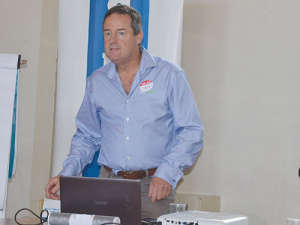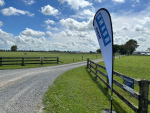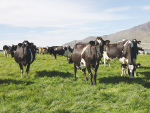He says farmers will have to focus on prevention of diseases, such as mastitis, rather than treatment.
Speaking at a Smaller Milk and Supply Herds (SMASH) seminar in Clevedon recently, Cranefield, technical manager of AgriHealth, also warned that the industry will need to change targets to include rational use of antibiotics.
According to Cranefield, New Zealand dairy farms should be aiming to achieve:
An average season bulk milk somatic cell count (BMSCC) under 100,000 cells/ml
Less than 10% of the herd treated for mastitis
Less than 10 - 20% of cows treated with antibiotic dry cow therapy.
“There is now both an economic and a moral cost if these targets are not achieved,” he says.
The ultimate aim of mastitis control is to limit the number of bacteria on a cow’s teats and to reduce the risk of bacteria entering the udder through the teat canal.
Cranefield says although this sounds simple, mastitis is the end result of complex interactions between cow, bacteria, environment, milking machine and farmer.
“The relative importance of these factors varies from farm to farm so it is important that your plan is specific to your farm.”
He says there are two key elements to reducing mastitis: eliminating existing infections and preventing new infections.
Cull long term infected cows
Cranefield says farmers must make more use of historic records to identify and cull chronically infected cows.
“Too often clinical mastitis records are incomplete and/or poor use is made of historic herd test information so it is only the recent high SCC cows that are culled. Also mandatory culls (e.g. a high empty rate) often take precedence over culling for mastitis.”
Drying off strategies
Cranefield believes all farmers should aim to achieve consistently low SCC throughout the season to reduce the need for antibiotic dry cow therapy at dry-off.
Cows with an ISCC of <120,000 cells/ml can be regarded as uninfected. Options for these cows include no treatment or treatment with internal teat sealants. Best-practice teat disinfection prior to treatment is often poorly done prior to administration of both milking cow and dry cow intra-mammary tubes.
Cranefield says there are key areas of importance during milking that will reduce the mastitis risk: identify and treat mastitis cows early and reduce the spread of bacteria and improve teat skin condition by effective teat spraying.
Bacteria from milking an infected cow will contaminate the cluster for the next five cows milked by that cluster.
Teat spray trials in NZ and overseas all show a 50% reduction in the new infection rate if teat spray is mixed and applied correctly. Healthy teat skin has a fatty acid layer that slows bacterial growth, reducing the mastitis risk. If teat skin is dry, the fatty acid layer is lost and bacteria will multiply in the cracked skin.
It is critical to achieve good teat condition in a herd all year round. This requires adding sufficient emollient and ensuring full coverage of all teat surfaces at every milking all season. This should be a key focus and constantly assessed all season.
Cranefield says pre-milking teat spraying the colostrum cows will help to improve milk let-down, improve teat condition and reduce bacteria on the teats.











